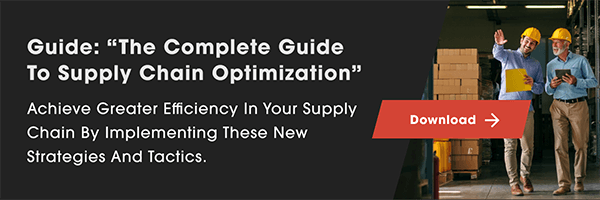COVID-19 revealed the lurking production catastrophe no one saw coming. With shutdowns, lockdowns and stay-at-home orders in place, some areas of production boomed while others plummeted. Amazon sales ballooned. Shell and Delta dropped off. Clorox soared. Major airlines and oil and gas companies lost out big.
Now four years out since the initial impact of the pandemic, companies are still reeling from the disruption. A shift in supply and demand has sent ripple effects through the entire supply chain. What better time for companies to reflect, strategize and optimize their supply chain efforts to meet the current moment?
The automotive industry faced its own set of hurdles as the supply chain slowed despite steady demand. However, four years later, this initial challenge has presented a new opportunity: The automotive industry can take a pause, reassess and draft new tactics for supply chain optimization as 2024 unfolds. Looking to do the same for your industry? Below, we break down how best to get started.
1. Draft a Winning Team.
COVID caught manufacturers and suppliers of all sizes off guard, in Vietnam and around the world. Labor shortages slowed production, frustrated buyers, and further stressed production teams that were already spread thin.
Companies have struggled to rest, catch their breath and get back ahead of the competition. But there’s no better time than now to take stock of internal processes and build something better.
By devising a specific pandemic response committee, team, or department, automotive companies can get ahead before the next disaster strikes. This team of dedicated personnel not only focuses on recruitment efforts (e.g., partnering with local universities to drive interest among recent graduates), but also optimizes collaboration among internal teams. Cross-departmentally, all teams can then work together to streamline processes and identify areas of improvement. The key is company-supported proaction, not reaction.
2. Optimize Inventory Management.
Once you’ve got staffing secured, the next step toward supply chain optimization is to manage your inventory. In the automotive industry, that means monitoring inventory parts as they arrive and organizing them according to the building process. The same applies to any other industry. Track your resources and organize stock in a way that’s easy for teams to maintain. Once you’ve established a clear system of inventory management, you’ll be able to more efficiently report on product availability and reduce overbuying.
Future impact is just as important. By forecasting your resourcing and staffing, you can get ahead of any perceived shortages without overcompensating and undermining your sales. Use both historical sales and seasonality to better assess present needs — and predict future ones.
For more about optimizing your inventory, check out the Supply Chain Optimization Guide and download it today.
3. Increase Operational Efficiency.
Once you and your teams have the tools you need to be successful, you can work toward goals in safety, efficiency and quality assurance. Mobile technology management tools are just one of the methods to help you reach this goal.
With the help of a computerized maintenance management system (CMMS), you can track daily processes, manage workflows, field sales and strategize marketing tactics. Better yet, you can take this multifaceted management tool with you wherever you go — so whether you’re on the floor or out on the field, you can keep production on schedule without sacrificing quality.
4. Diversity Your Supplier Relationships.
Finally, stay nimble. Delays during the supply chain process are frustrating, but they aren’t inevitable. Delays are most often the result of:
-
A shortage of raw materials
-
Import/export issues
-
Geopolitical or regulatory complications
-
Natural disasters or emergencies
Companies have grown accustomed to fulfillment delays as they’ve grappled with what the best supply chain tactics are in the wake of the pandemic. However, as a result of diversifying your supplier relationships, you can purchase raw materials in bulk and more easily communicate delays with all parties when they do happen.
Ready To Get Started? We Can Help.
The pandemic put companies of all sizes to the test. But there’s hope on the other side as organizations respond and fortify their production so that it is stronger than ever before. It’s never too late to start optimizing your supply chain processes, resources and teams. We can help you take the steps to build a better future for your customers of tomorrow — today. Get your copy of our Supply Chain Optimization Guide to get started.


